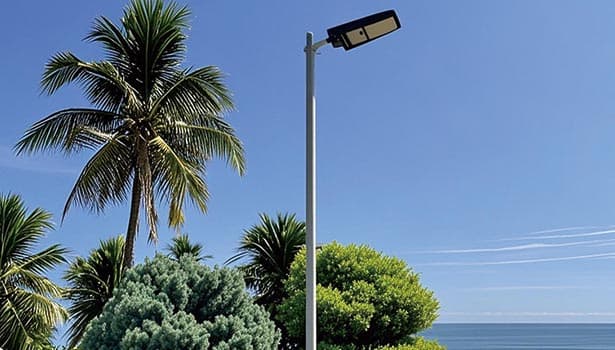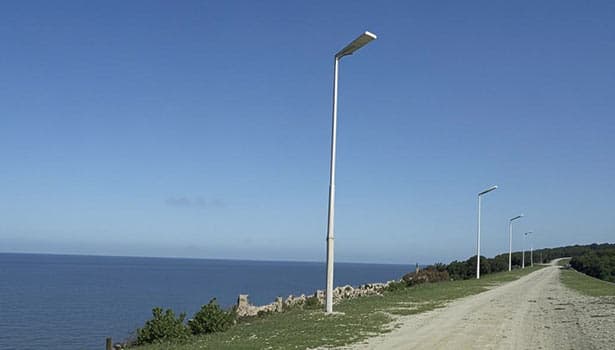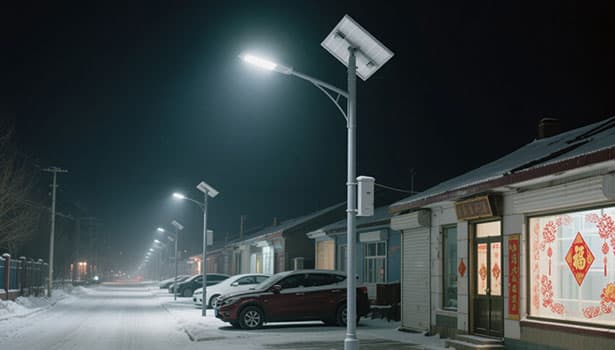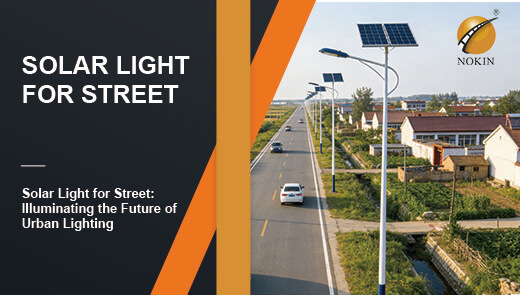7 Mistakes to Avoid When Purchasing Solar Street Lights
Solar street lights, with their energy-saving features and low maintenance costs, have become the preferred choice for outdoor lighting in residential communities, rural roads, parks and municipal areas. It is expected that the global solar street light market will grow by 12% annually by 2030, but a wrong purchasing decision may turn this environmental protection investment into a frustrating expense. For example:
A community in Florida purchased low-cost solar street lights in 2023. 40% of the street lights failed within three months (with shortened operating time and cracked panels), and the replacement cost was 30% higher than the initial purchase cost.
A community in California neglected the high-temperature resistance performance; Their lead-acid batteries expand in summer and need to be completely replaced after a year - this adds an unexpected cost of $8,000.
As an experienced supplier of solar street lights, this guide will analyze 7 key mistakes that buyers often make and provide practical suggestions to help you choose solar street lights that meet your needs, are durable and cost-effective.

Mistake 1: Price First, Neglecting Quality
Mistakes That Buyers Often Make
Many buyers first choose the cheapest option and overlook core components such as batteries, solar panels and casing materials. Common thinking patterns include: "All solar street lights work in the same way" or "I just need it to be on."
The Hidden Dangers of Cheap Solar Street Lights
|
Risk Category |
For Details |
Influence |
|
Short lifespan |
Low-priced models use refurbished lead-acid batteries (instead of lithium batteries) and inefficient polycrystalline/amorphous silicon solar panels. Average lifespan: 6–12 months (vs. 3–5 years for quality). |
Significantly shorter service life compared to high-quality solar street lights. |
|
Unreliable performance |
Battery labels are often incorrect (e.g., labeled 100Ah but actually 60Ah). Solar panel efficiency is only 12–15%. Battery life is unstable: 5 hours on sunny days, 2 hours on cloudy days. |
Cannot meet the 8-hour nighttime power demand, leading to poor reliability and inconsistent lighting. |
|
Lack of after-sales service |
Most cheap lights are from small workshops with no warranty or replacement parts. Damaged lights cannot be repaired and must be replaced entirely. |
Higher long-term costs and inconvenience due to lack of maintenance and support. |
Correct Approach: Focus on Total Cost of Ownership (TCO)
Don't follow the principle of "cheap first, then price" : Compare models with similar core specifications (such as lithium iron phosphate batteries, monocrystalline silicon solar panels), not just the price.
Calculate the total cost of ownership (TCO) : The service life of high-quality solar street lights (800-1,500 Japanese yen) is 3-5 years, and the electricity cost is 0. The annual total cost of ownership (TCO) = 200-300 Japanese yen. Cheap street lights (300 yen) need to be replaced every year, with an annual total cost of ownership (TCO) of 400 to 600 yen.
Mistake 2: Ignoring Battery Capacity and Type
The battery is the "energy storage device" of solar street lights, but 60% of buyers overlook the capacity and type of the battery.
Common Misunderstandings
"The larger the capacity, the better" : Equipping a 10W solar street light with a 200Ah battery is not only a waste of money but also adds weight. It can never be fully charged, causing the battery to age prematurely.
"All batteries are the same" : Confusing lead-acid batteries with lithium batteries can lead to poor performance in extreme weather.
Why Do Incorrect Batteries Cause Malfunctions
Insufficient capacity
For example: A 20W light needs to run for 8 hours every day.
Daily power consumption = 20W × 8 hours = 160Wh.
The required battery capacity (12V) = 160Wh ÷ 12V ≈ 13.3Ah.
If you choose a 10Ah battery:
On sunny days: Run for 6 hours (instead of 8 hours).
Two consecutive days of overcast days: Exhausted halfway through the night of the second day.
Defective battery type
|
Battery Type |
Lifespan (Number of Cycles) |
Temperature Resistance |
Safety |
Most Suitable Applications |
|
Lead-acid battery |
300–500 |
Expands above 40°C; capacity drops below 50% at -10°C |
Low (risk of leakage) |
Temporary lighting, low-temperature areas (rarely exceed 35°C) |
|
Low-quality lithium |
500–800 |
Unstable above 35°C |
High (risk of fire) |
Not recommended for long-term use |
|
LiFePO₄ (Lithium Iron Phosphate) |
2000–3000 |
Operates -20°C to 60°C; capacity >80% at -10°C |
High safety (no explosion risk) |
Suitable for all climates (residential, rural, coastal regions) |
How to Choose the Right Solar Street Light Battery?
Calculate the required capacity
Battery capacity (Ah) = (Lighting power × daily operating time) ÷ Battery voltage × 1.2 (Safety margin) × standby days
Example: 30W lighting, 10 hours of operation time, 3 days of standby on cloudy days, 12V battery
Capacity = (30×10) ÷12 ×1.2×3 = 90Ah → Select 100Ah.
Give priority to lithium iron phosphate batteries
Their service life is 4 to 5 times that of lead-acid batteries and they can withstand extreme temperatures.

Mistake 3: Selecting the Wrong Wattage/Lumens
"Wattage = brightness" is a common misconception - lumens (lm) (actual light output) are more important. Incorrect wattage/lumens can lead to two problems: insufficient lighting (posing a safety risk) or excessive lighting (wasting energy).
Common Mistakes
Insufficient lighting: A 5-meter-wide rural road uses 10-watt (1,000 lumens) lights, with a coverage area of only 3 meters, leaving dark spots (posing an accident risk).
Excessive lighting: A 1.5-meter-wide garden path uses 30-watt (3,000 lumens) lights, which are as bright as municipal roads. This not only wastes energy but also disturbs residents.
The Main Difference: Wattage and Lumens
Wattage (W) : Measures energy consumption (the higher the wattage, the greater the electricity consumption).
Lumen (lm) : Measures light output (the higher the lumen, the brighter the light).
Modern LED technology is more efficient: a 20W LED light in 2024 = 3,000 lumens (a 30W LED light in 2019 = 3,000 lumens). Choosing only based on wattage will waste energy.
Lumen/Watt Guides for Different Applications
|
Application |
Width/Area |
Recommended Power |
Recommended Lumens |
Illumination Target |
|
Garden Path |
1–2 meters |
10–15 watts |
1,000–1,500 lumens |
Clearly visible, no glare |
|
Residential Area Sidewalk |
2–3 meters |
15–25 watts |
1,500–2,500 lumens |
Full coverage, no dark spots |
|
Residential Area Road |
3–5 meters |
25–35 watts |
2,500–3,500 lumens |
Pedestrians/bicycles are visible |
|
Rural Road |
5–8 meters |
35–50 watts |
3,500–5,000 lumens |
No blind spots for vehicles |
|
Municipal Road/Square |
More than 8 meters |
50–80 watts |
5,000–8,000 lumens |
High-speed vehicles drive safely |
Mistake 4: Ignoring the Efficiency and Size of Solar Panels
Solar panels are "energy", but buyers often think "the bigger, the better", or use the same type of panels in all climatic conditions.
Common Misunderstandings
Confuse the size and efficiency of the solar panels:
There are two common materials for solar panels: monocrystalline silicon and polycrystalline silicon. Their power generation efficiencies are different. Therefore, the power generation capacity cannot be judged solely by the size of the panel. For instance, a 1-square-meter polycrystalline silicon panel (with an efficiency of 18%) generates less power than a 0.8-square-meter monocrystalline silicon panel (with an efficiency of 22%).
One solar panel can be used in all regions:
The regions where solar street lamps are installed vary, and so do the required solar panels. Therefore, do not use the same type of solar panels in different regions. It is necessary to comprehensively consider the lighting conditions of the area where you are located. For example, Using the same type of solar panel in Florida (with an annual sunshine duration of 2,000 hours) and Arizona (with an annual sunshine duration of 3,000 hours) would result in insufficient charging in Florida.
The Risk of Improper Selection of Solar Panels
Even on sunny days, it will be undercharged
A 20-watt solar street lamp requires 160 watt-hours of electricity every day. A 50-watt polycrystalline silicon solar panel (with an efficiency of 18%) generates 9 watt-hours of electricity per hour and takes 18 hours to fully charge (but it only receives 4 to 6 hours of sunlight each day).
Malfunctions under extreme weather conditions
In the north during winter, the daily sunshine duration is only 3 to 4 hours. A small solar panel of 0.3 square meters (with an efficiency of 22%) generates 264 watt-hours of electricity per day, which is only enough for a 15-watt solar street light (a 30-watt lamp cannot be used).
How to Choose Solar Panels?
Comparison of solar panel types
|
Type of Solar Panel |
Efficiency |
Lifespan |
Most Suitable Applications |
|
Monocrystalline silicon |
22–24% |
More than 25 years |
All climatic conditions (residential areas, rural areas, coastal regions) |
|
Polysilicon |
18–20% |
20–22 years |
Sunny areas with tight budgets |
|
Amorphous silicon |
10–12% |
5–8 years |
Temporary lighting (construction sites) |
Calculate the required power of the solar panels
Use the following formula (considering a 30% energy loss) :
The power of the solar panel (W) = (Daily energy consumption ÷ daily duration of sunlight) ÷ solar panel efficiency × 1.3
Example: 30W light source (daily energy consumption 240Wh), 4 hours of sunlight, efficiency 22%
The power of the solar panel = (240 ÷ 4) ÷ 0.22 × 1.3 ≈ 355W → Select a 360W monocrystalline silicon panel.

Mistake 5: Ignoring Climate Adaptability
Solar street lights are usually installed outdoors - yet 70% of buyers overlook climatic factors such as humidity, temperature and rainfall.
Climate-Related Faults
In coastal areas, the salt in sea breeze can corrode iron casings and terminals. The solar street lights in a community in Florida rusted within a year of use, causing a short circuit.
In high-temperature areas: Lead-acid batteries in Texas expanded at 45°C and lost 50% of their capacity within six months.
In rainy areas: A buyer in Seattle chose a one-day backup light - after two days of rain, 50% of the solar street lights broke down.
Key Specifications for Climate Adaptability
IP Protection Grade (Dust/Water)
|
IP Protection Level |
Protection Grade |
Most Suitable Applications |
|
IP65 |
Completely dust-proof; can withstand heavy rain |
Inland areas (e.g., Midwestern United States) |
|
IP67 |
Completely dust-proof; can be submerged 1 meter deep for 30 minutes |
Coastal/rainy areas (e.g., Oregon, Florida) |
|
IP68 |
Completely dust-proof; can be submerged in water for long periods |
Areas near lakes or rivers |
Climate-specific configuration
|
Climate Type |
Core Requirements |
Recommended Configuration |
|
Coastal areas (high humidity/salinity) |
Corrosion-resistant and waterproof |
IP67+ rating; aluminum shell with anti-corrosion coating |
|
High temperature (≥40°C in summer) |
Heat resistance |
Lithium iron phosphate battery; LED operating temperature ≤85°C |
|
Low temperature (≤-10°C in winter) |
Low-temperature performance |
Low-temperature lithium battery (discharge at -30°C); snow-proof panel |
|
Rainy days (≥150 rainy days/year) |
Long standby running time |
5–7 days battery standby; IP67 protection rating |
Action Steps: Check the Local Climate Data
Find the average temperature range in your area (for example, the USDA cold zone in the United States).
Check the number of rainy days in a year (NOAA data from the United States).
Request test reports from suppliers (for example, salt spray tests in coastal areas and high-temperature tests in desert areas).
Mistake 6: Purchasing Solar Street Lights with Non-Replaceable Batteries
The battery wears out every 3 to 5 years - but the non-replaceable design means that when the battery runs out, you have to discard the entire light.
Cost of Non-Replaceable Batteries
A school in Texas purchased 100 integrated solar street lights (with non-replaceable batteries) for $30,000. Three years later, all the batteries failed and it cost $10,000 to replace them completely.
If replaceable batteries are used, the cost of replacing the same 100 lights with new lithium iron phosphate batteries is $3,000 (saving $7,000).
How to Choose A Replaceable Battery Model
Check the design: Ensure that the battery compartment is detachable (non-sealed).
Confirm the supply of parts: Require the supplier to guarantee battery replacement services for more than five years.
Give priority to the convenience of replacement: Choose a model that allows one person to replace the battery without special tools.
Mistake 7: Ignoring the Placement of Solar Panels
Even the best solar panels will fail if placed in the shade. In a community in Colorado, lighting fixtures were installed under trees. The solar panels could only receive three hours of sunlight each day, reducing the operating time to two hours.
Common Placement Errors
Ignore obstacles: Install near buildings, trees or other lighting fixtures (shadows can block 80% of sunlight within one hour).
Direction/Angle error: In the Northern Hemisphere, solar panels facing east (rather than south) lose 40% of their electricity every day. A mismatch between the angle and the latitude (for example, a latitude of 10° while New York is 39°) can lead to a 15% reduction in efficiency.
How to Install Solar Panels to Get Maximum Sunlight Exposure
Select a shaded location: Ensure that there are no obstacles (trees, signs) higher than 1 meter within a 5-meter radius of the solar panel. Consider winter shadows (trees shed their leaves, so the shadows will become longer).
Optimized orientation: Northern Hemisphere → South (±15°) Southern Hemisphere → Northward.
Set the correct Angle: Use "local latitude ±5°" (for example, Los Angeles latitude 34° → Angle 29-39°; Chicago latitude 42° → Angle 37-47°).
Regular cleaning: Wipe the panels in dusty areas every week (dust can reduce efficiency by 10-20%). Clear the snow immediately in winter.

Solar Street Lights Final Checklist
|
Category |
Checklist Items |
|
Quality |
Lithium iron phosphate battery (more than 2,000 cycles) Monocrystalline silicon solar panel (efficiency ≥22%) IP65+ protection class (climate fit) |
|
Performance |
Battery capacity (calculated based on operating time + standby days) Solar panel power (matched with local light) Wattage/lumens (suitable for application) |
|
Maintenance |
Replaceable battery (detachable battery compartment) Supplier guarantees battery components for more than 5 years |
|
After-sales Service |
Battery warranty: more than 3 years Full warranty for lights: more than 5 years Provides installation instructions |
80% of the problems with solar street lights stem from poor purchasing decisions. If you need help, please tell us your location and requirements in the comments - NOKIN team will offer tailor-made suggestions!




